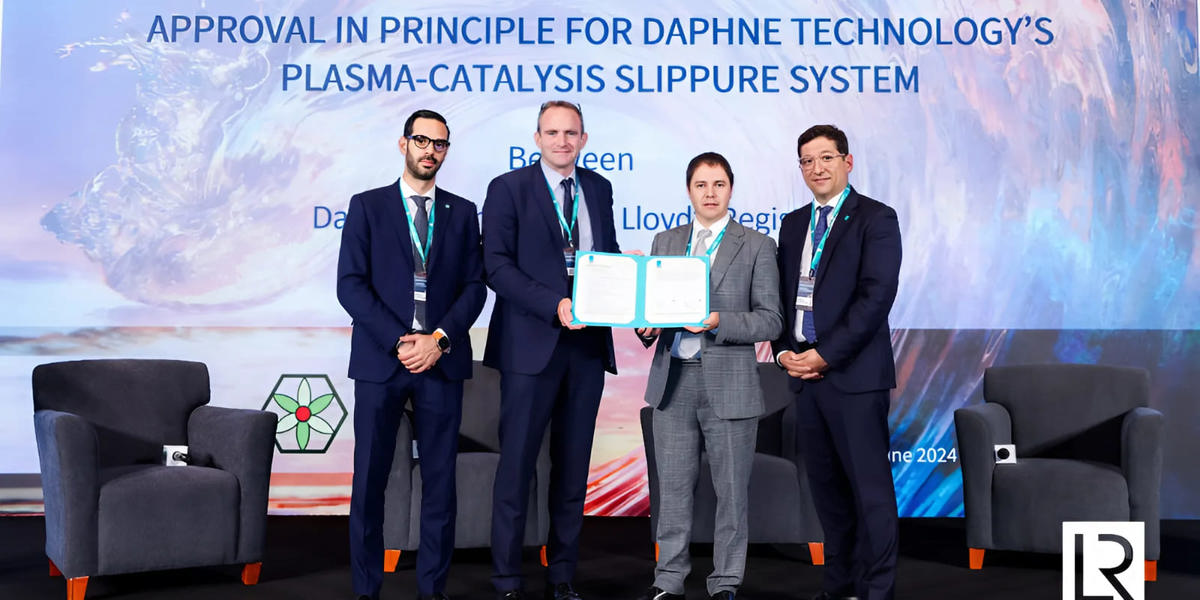LR approves Daphne Technology’s methanol abatement system
Classification society Lloyd's Register (LR) has issued an approval in principle (AiP) to Swiss climate tech firm Daphne Technology’s methane abatement technology.
 PHOTO: Company representatives at the AiP awarding ceremony. Daphne Technology
PHOTO: Company representatives at the AiP awarding ceremony. Daphne Technology
The new system uses Plasma-Catalytic technology that reduces methane slip by using plasma and an oxidation catalyst to convert methane into carbon dioxide (CO2) and water (H2O). Plasma is a state of matter that contains charged particles.
The process enhances efficiency by reducing plasma power consumption, thereby enabling substantial reductions in methane slip at exhaust gas temperatures much lower than those necessary for catalyst-based methane reduction systems, which rely solely on catalysts to convert methane into less harmful substances.
Plasma power consumption is the amount of electrical power required to sustain the plasma in this technology, which is used to facilitate chemical reactions that convert pollutants like methane into less harmful substances.
Earlier this year, LR observed engine operations testing the Plasma-Catalytic technology system, achieving a 62% reduction in methane slip in an engine operating at 75% load, with exhaust gas temperatures as low as 380°C.
The technology will aid in abating “methane slip in the maritime and land-based oil and gas industries,” Daphne Technology’s chief executive and founder Mario Michan says.
Methane slip: a stumbling block
LNG has been growing as an alternative marine fuel and has become more widely available, technologically advanced and is often competitively priced. The global LNG-fuelled fleet is currently made up of 557 vessels, with another 160 expected to join this year, classification society DNV data shows.
However, limiting methane slip in the combustion process aboard ships using LNG as fuel is a major hurdle. Methane slip occurs when unburned methane from ship engines escapes into the atmosphere. Since it is unplanned and therefore largely unmeasured, it poses a significant threat to the environment due to methane’s high global warming potential as a greenhouse gas (GHG). Methane emissions have up to 36 times higher global warming potential than carbon dioxide over a century, according to a World Bank study.
By Tuhin Roy
Please get in touch with comments or additional info to news@engine.online





